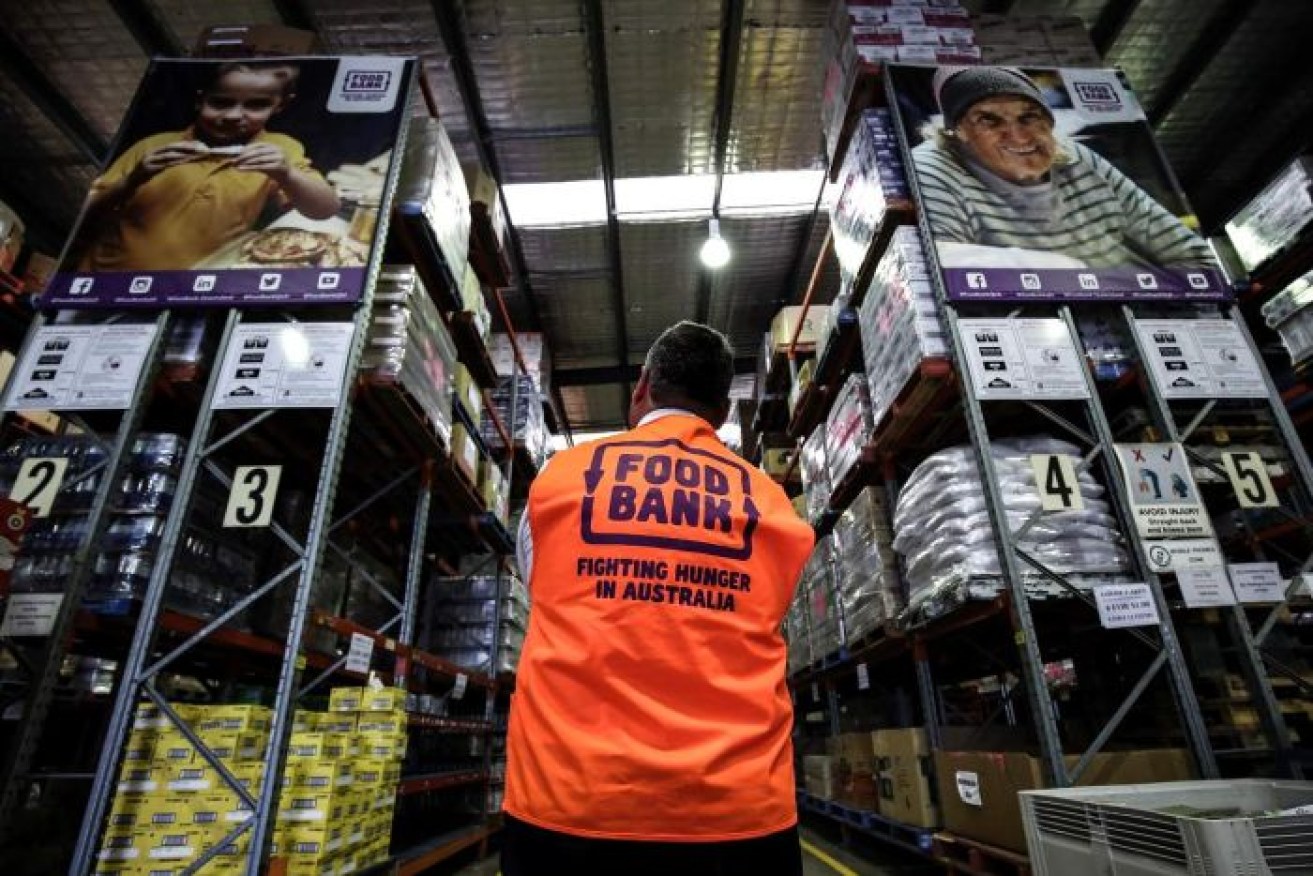‘Dramatic increase’: Demand for food relief skyrockets as coronavirus lockdowns bite


Food banks across Australia are struggling to meet demand. Photo: Getty
Food banks across Australia are handing out as many hampers in one day as they normally do in a week as coronavirus lockdowns take a toll, The New Daily can reveal.
There is a huge backlog of requests for support in Victoria and New South Wales, with food banks saying they are experiencing demand unlike anything they have seen before, including during the disastrous 2019-20 bushfire season.
It comes as new research from the Australian Council of Social Service shows that almost 90 per cent of people on the lowest incomes in lockdown are missing out on the COVID-19 Disaster Payment.
‘Mind-blowing’ demand for food relief
Exclusive data from Foodbank Australia, the nation’s leading provider of food and groceries to charities, shows the organisation is giving out more than 2500 hampers and food parcels a day, which they would normally do in a week.
That’s the equivalent of 2,289,000 kilograms of food and groceries each week.
In NSW, they are trying to get through a backlog of 10,000 requests and in Victoria, police forced Foodbank to close shop just 90 minutes after it opened last Friday as demand for the service was so high that the queue extended all the way to the West Gate Bridge.
Foodbank Australia chief executive Brianna Casey said the demand was “mind-blowing”.
“We’ve seen a dramatic increase for food relief in lockdown,” Ms Casey said.
“In NSW, we are receiving thousands of inquiries. We have actually seen a growth in food relief of 200 per cent in the last nine weeks.
“Last week in both NSW and the ACT, we had the biggest distribution week on record.”
Bigger than the bushfires
Just 18 months ago, Foodbank was helping Australian communities reeling from the horrific bushfire season to get basic supplies.
But even those numbers were nothing compared to the last two weeks of July, Ms Casey said.
Single mums, international students, casuals who have lost work and can’t access extra COVID payments and people who are isolating are among those struggling to pay their bills and purchase food, she said.
At the Addison Road Community Centre in Marrickville, the requests for food have gone up 20 per cent week on week over lockdown.
“Look, it’s huge,” centre chief executive Rosanna Barbero said.
“You can’t get a sense of the magnitude of the problem with just the number of hampers,” Ms Barbero said.
“It’s constant. The need far exceeds our current capacities.”
The centre has 300 volunteers sending parcels throughout Sydney and across the state to regional communities struggling with the extended lockdown.
“We’re not funded, so we’ll keep doing it until the money runs out,” Ms Barbero said.
As Australians struggle, billionaires cash in
For some, the pandemic has been a great money maker.
Australia’s 31 billionaires have had their fortunes increase by nearly $85 billion over the past 18 months, according to Oxfam.
But hundreds of thousands of people living below the poverty line can’t access extra payments when lockdowns occur.
The COVID-19 Disaster Payment for Australians with jobs has been extended to casual workers and visa holders employed for less than a year if they normally work for more than eight hours a week and have lost work because of the lockdown.
But the payments exclude people who worked fewer than eight hours a week before the lockdowns hit, despite lockdowns making it near impossible to find paid work.
That means an estimated 90 per cent of adults currently in lockdown on social security payments are excluded from the $200-per-week disaster payments, new research from the Australian Council of Social Service revealed this week.
Most welfare recipients miss out on disaster payment
The federal government’s data shows nearly nine in 10 people locked down on income support payments such as JobSeeker have missed out on accessing the $200-per-week COVID-19 Disaster Payment.
ACOSS chief executive Cassandra Goldie said excluding people from the payments was undermining the effectiveness of the lockdown.
“The majority are on JobSeeker, just $44 a day, with no hope in sight of finding paid work due to the lockdowns which, although necessary, are driving up underemployment,” Dr Goldie said.
The Antipoverty Centre has been calling for the government to “pay people to stay home”.
“There is one huge elephant in the room, and that is, you have millions of people relying on poverty payments who didn’t lose enough work or didn’t lose any work,” spokesperson Kristin O’Connell said.
“And the cost of essentials goes up during lockdown. The cheapest goods fly off the shelves. People are stuck in their homes, their bills go up.”
She said the solution was to bring back the temporary Coronavirus Supplement, which added an additional $550 per fortnight to the unemployment benefit JobSeeker.
“Bringing everyone on an unemployment payment up to the poverty line last year meant people were able to comfortably make the choice to do things that protected their own safety and the safety of the whole community,” Ms O’Connell said.








